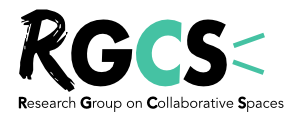São Paulo city, the largest metropolis in South America, is the home to over 12 million people and it is considered as the Latin America’s Silicon Valley, with a broad variety of start-ups, innovation hubs, a buzzing place of entrepreneurship, and investments to push a ‘smart city’ agenda. With its economic power, São Paulo stands out for bringing together 2,700 active tech startups and the most important initiatives, basic conditions and government support to stimulate the startup system. São Paulo city is home to the largest and most mature startup ecosystem in South America, and home to 38 of the 100 largest private companies with national capital and 63% of international groups installed in Brazil.
São Paulo State is responsible for 69.5% of the total invested by the states in Research and Development in Brazil. It has an extensive network of public and private research institutions, with an expressive knowledge production, as well as a stimulus to the implantation of technological parks.
According to the Brazilian Institute of Geography and Statistics (IBGE), 38% of the population in regular employment in the State of São Paulo works in Services. Trade e Industry employ 19% and 17% of the population respectively, followed by Construction and Agriculture (IBGE – 2014). The job market in the State of São Paulo is distinguished by the high qualification and training of its workforce.
We have in Sao Paulo city the best Brazilian public University, University of Sao Paulo (USP). Sao Paulo State concentrates 25% of the total of higher education institutions in Brazil. The three public universities in São Paulo are among the best in the country, with international recognition. It is also home to the largest free technical and vocational education network in Brazil, with Technical Schools (Etecs) and Faculties of Technology (Fatecs).
In addition to the 40 cultural centers, São Paulo city is home to 59 museums. One of them, MASP, is the largest art museum in Latin America.
Believed to be the 14th most globalized city in the world, São Paulo city has an international population, with large Japanese, Italian, Lebanese, Korean and Bolivian communities. With the largest Italian community in Brazil, São Paulo city has more than 6,000 pizzerias that produce more than 1,000,000 pizzas per day or 720 per minute. It has 12,000 restaurants. It is the largest Japanese city outside of Japan, Lebanese outside of Lebanon, Portuguese outside of Portugal and Italian outside of Italy.
The State of São Paulo responded in 2017 for 32% of the domestic income generated in the services sector, and accounted for 31% of the Brazilian Gross Domestic Product (GDP) (2017). It is recognized as the largest economic and industrial pole in the Southern Hemisphere. The state of São Paulo is in the largest consumer market in Latin America, with the largest industrial park in the country, and a labor market characterized by the high qualification of its workforce. It concentrates the 4th largest consumer market in Latin America (with 45 million inhabitants), behind only of Brazil as a whole, Mexico and Colombia.
*Sources: https://www.investe.sp.gov.br/por-que-sp/ ; https://www.forbes.com/sites/angelicamarideoliveira/2018/06/29/sao-paulo-city-drives-innovation-agenda/#349747065744 ; https://www.inc.com/zoe-henry/3-reasons-why-sao-paulo-is-a-hub-for-business-innovation.html ; https://www.code-n.org/blog/sao-paulo-brazil-startup-scene-upcoming-tech-startups-strenghts-weaknessesentrepreneurship/ ;
https://theculturetrip.com/south-america/brazil/articles/10-things-you-may-not-know-about-sao-paulo/ ; https://www.sabedoriaecia.com.br/brasil/45-fatos-e-numeros-impressionantes-sobre-a-cidade-de-sao-paulo/
